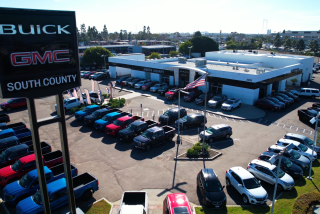Mary Barra new CEO at GM, most powerful female exec in America [Q&A]
Mary Barra, chosen to take over as CEO of General Motors, caught the car bug as a child and still admits a passion for Camaros.
As she rose from intern to the automaker’s global product development chief, Barra worked at some point in nearly every aspect of the business, even heading GM’s human resources department.
When she starts her new gig on Jan. 15, she’ll be arguably the most powerful female executive in America, joining a group of just 23 women currently heading Fortune 500 companies. She’s the first woman to head a major automaker.
Barra, a Michigan native who is married and has two children, has a master’s degree in business administration from Stanford University.
Most recently at GM, Barra, 51, led the development of such critically acclaimed models as the seventh-generation Corvette, GM’s new truck lineup, two new rear-wheel-drive Cadillac sedans and the 2014 Impala.
Barra was tapped for CEO over other veteran GM executives, including Mark Reuss, president of the automaker’s North American operations and Dan Ammann, GM’s chief financial officer.
As her name surfaced as a possible successor to outgoing CEO Dan Akerson, we sat down with Barra at the North American International Auto Show in Detroit this year and asked her about the industry and the way she runs things.
Q: How would you describe your management style?
A: Collaborative. When we have to make tough decisions, giving direction and setting the strategies for the products of General Motors, there should be constructive tension. We should have vigorous debates.
I try to create an environment where people feel they could voice their concerns and that we can get the best ideas on the table and then make the right decision. But at the end of the day, when the decision has to be made, if we don’t have complete unanimity, I have no qualms about making it. But I want that tension in a constructive way to make sure we evaluate things from every angle.
I am pretty hands on as well. I will call a chief engineer when I am driving a vehicle.
Q: What do you like about the car business?
A: Obviously this is not an industry for the weak at heart. It is highly competitive because there are really competent manufacturers out there that you have to respect. They can do great things.
What is exciting to me is how excited people can get about cars. For a lot of people, this is the most important thing they buy in their life or at least the second most after a house. We get to be a part of that very important purchase whether it is their first car or a car they have aspired to their whole life. We want to be those cars.
Q: When did you know that you want to make the auto industry a career?
A: My dad was a die maker for the Pontiac motor division for 39 years. I was exposed to the business. We used to get excited when the new models would roll out. I always had interesting cars. I always had favorite cars -- Camaros and Firebirds.
I got the opportunity to go to GMI (A former GM sponsored program at what is now Kettering University in Flint, Mich.) for my education and then I started working at the Pontiac Motor Division. I got to work in all parts of it and I just loved the business, from the plant floor to leading global product development, every aspect of the business is just a lot of fun.
Q: What is the hardest management issue when it comes to running this company now and how is it different from five or six years ago?
A: The most important thing we have to drive into the business every day is that it all starts and ends with great product.
We have to make sure every aspect of product meets the customer’s needs. It has to be a customer focused value with excitement from design to performance to technology to durability, reliability and quality. At any interaction at any level of the organization, we need to keep people focused on great products.
Five or six years ago, we maybe didn’t have that focus as intense as we needed it to be. It wasn’t that we didn’t know it wasn’t important, but I think there is a shift of really understanding that this is the area where you win or lose. We need to win on every segment. I don’t think we had as much focus on that as we should have.
Q: How important is it to be the No. 1 automaker?
A: Quite clearly this is a business where you want to win. You can do a lot of things to have the top market share, but we want to win and grow profitably and have sustained growth in the business.
If keep putting out great winning products and do it in a way that the company can be profitable at, we are going to continue to grow and that’s what I focus on. If we have winning products the market share will come.
Q: Has the way people purchase cars change since the recession? For example, they learned to drive older cars and found that the vehicles were reliable.
A. People realize that they can stay with their vehicle for a longer period of time. I still think that there is an excitement about wanting a new car. What also is happening is that as we are putting more functionality and features into the cars.
The manufacturers that can best integrate the technology people use in their everyday life and make it seamless as they get into the car will provide a reason why people will want to get those new vehicles.
Q: How long should a car last?
A: Well over 100,000 miles.
I hate to put a specific number on it, but cars are more durable and frankly that is one of my areas of focus. It is a flawed theory to think that a car will only last 50,000, 60,000 or 70,000 miles. We are continuing to look at how to make our cars more durable and more reliable.
Q: What was your first car?
A: My first car was a Chevrolet Chevette, red. It was all I could afford as I went away to college. What I aspired to was this beautiful Camaro that I loved and a Firebird as well. But just starting off school and having a lot of bills to pay and being pretty much on my own, the Chevette was what I could get. It served me well throughout college.
The first plant I worked in was the (Pontiac) Fiero plant so then in my senior year I had a Fiero. It was a super fun car to have and drive.
Now, I am driving new cars all the time because I want to get into them as soon as we have them out on the road.
ALSO:
Mary Barra’s rise from GM intern to chief executive
Ford unveils sixth-generation Mustang for 50th anniversary
Treasury sells rest of GM stock, ends bailout with $10.5-billion loss
Follow me on Twitter (@LATimesJerry), Facebook and Google+.







